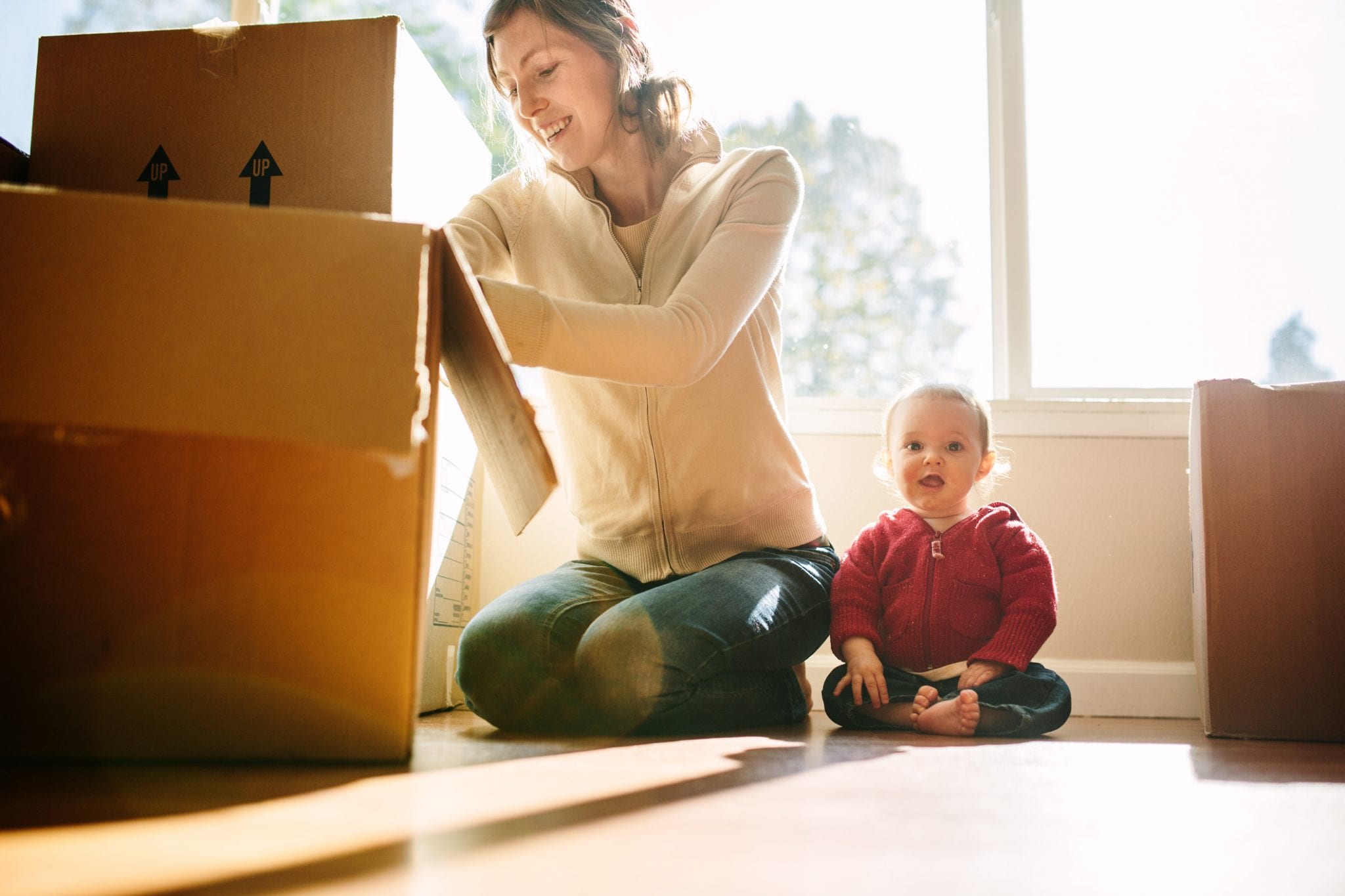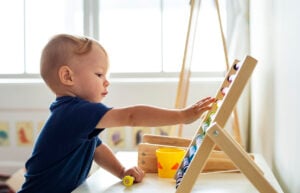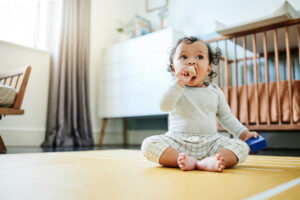Moving to a new home can be seriously stressful, and the whole buying and selling process is tedious. Then, once it’s all said and done, you actually have to move. That’s right; it’s time to pack up every piece of furniture, your beloved designer bags, and every random Target Dollar Spot find you’ve stuffed into your junk drawer. (My paper straw game is strong; thanks, Target!) Which might not be a big deal unless, of course, you have a baby or a toddler or, if you’re like me, BOTH.
Don’t get me wrong, I am head over heels in love with the little people we’ve made. But, boy, oh boy, do they have a ton of stuff. Besides their accumulating affection for junk and their ever-growing collection of nonsense, baby and toddler “stuff” isn’t the only logistical issue in moving with the littles. Safety, preparedness, bedtime routines, and creature comforts should be considered.
Moving Meant Downsizing Our Lives
Our family moved from the sprawling suburbs to the city, and to add salt to the wound of mastering a move with wee ones, it also meant downsizing to minimize my husband’s commute for more quality family time. Since we were losing significant square footage, we needed to be in a space we truly loved. We went with new construction, which bought us some extended packing time as the building process is lengthy. Over two months, we slowly packed away our belongings into boxes, culled our closets, and managed our move in a strategic order that I think any parent would appreciate.

Before Moving Day
1. Go Supply Shopping
Stock up on packing tape, moving boxes, seasonal storage bins, bubble wrap, protective paper, stretch wrap, trash bags (oh, SO many trash bags), and large permanent markers. I’d recommend you purchase more than you think you will possibly need and keep your receipt to return whatever you don’t use. Overstocking your supplies will eliminate running back and forth to the store 193,729,484 times with your tots in tow.
2. Sort Out Your Storage
After consulting with the owner of a premier local moving service, the biggest takeaway was the advice to have all your boxes in one convenient area of your home, like the garage. This is so that the movers aren’t wasting precious time going from room to room to gather boxes and can load directly onto the truck. If you’re being charged by the hour, this saves you time and significant cash.
While this concept made perfect sense, there was one snag. Our garage was stuffed, and there was no space to put all our boxes in anticipation of the move. So, we first had to sort out storage spaces. This meant a complete cleanout of the attic and garage. We dedicated an entire three-day weekend to this process and had a family member lend a hand with the kiddos. Several car loads to Salvation Army later, we had a clean slate to prep for our move.
3. Pack By Category
When packing in advance of a move, you can’t empty the room as you would if you were transitioning immediately. Because, well, you still have to live there! The solution is to pack by category instead of by room. Start with low-priority items and work on emptying your house strategically. My order of progression was:
- Decor and seasonal items
- Wall art
- Extra linens
- Small appliances (not used daily)
- Serving ware
- Formal dishes and glassware
- Small decorative furniture
- Out-of-season clothing
Keeping out only the items you need to get through your day-to-day without any excess will help you see what you’ll be able to live without. It may even allow you to let go of a few things, but you will make a huge dent in the packing process. Take advantage of your children’s nap time to complete this step; you’d be surprised how quickly you can pack all these nonessentials.
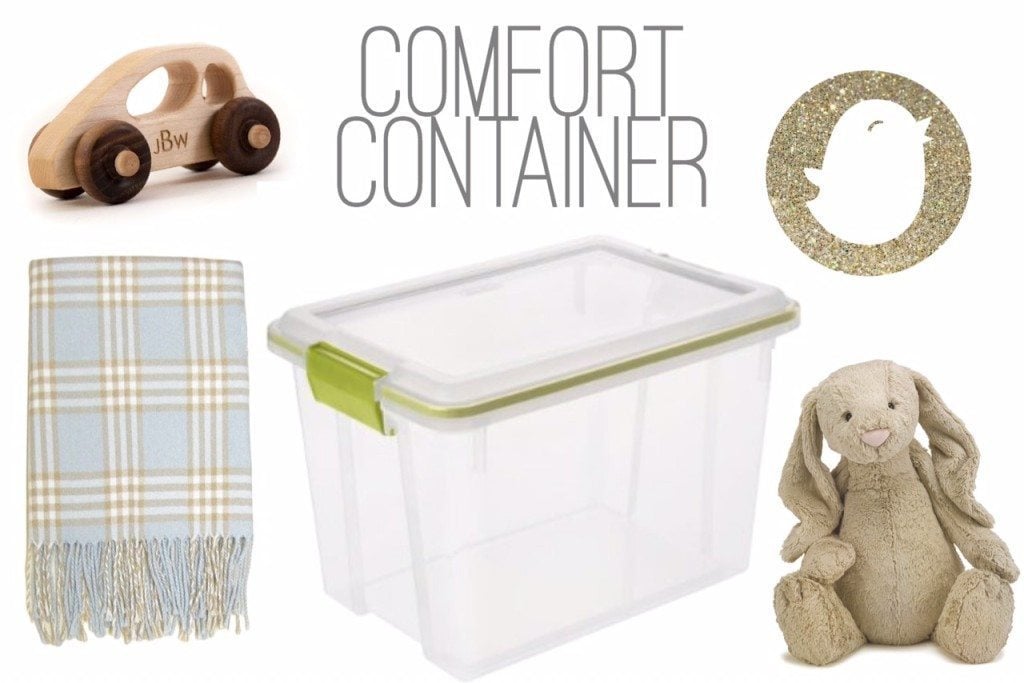
4. Create Comfort Containers
Next, provide everyone with a large clear storage bin or “comfort container” and label it with their name. Filling their own container is a fabulous way to get the littles involved in the packing fun. Have them pick out several favorite small toys, a favorite blanket, and a stuffed animal. Pick out a favorite pair of pajamas and a special bedtime story. If your toddler is old enough, allow them to make all of the decisions and place each item in their container by making it a game filled with positive encouragement.
Once they are done, help them pack the rest of their essentials. Fill a gallon-sized plastic baggie with their toothbrush, toothpaste, and other toiletries or medications they require daily. Include a bath towel, wash cloth, and enough outfits for the remaining days before your move. This way, they have all their things in one accessible place, and when you get to your new home, you won’t be tearing boxes open at 2 a.m. searching for that special lovey your baby can’t sleep without.
Once you have the kids’ containers ready, pack one for yourselves using the same concept of packing primarily essentials, a few comfort items, toiletries, medications, and enough clothes to get you through the move. Everything besides major furniture pieces gets packed because everything you need immediate access to should be in your comfort container.
5. Pack A Home Base Box
Expanding on the concept of a comfort container is a home base box. This box has everything you will need access to for the moving day and the first night in your new home. Think of it as a portable “home base.” Include the following:
- A notepad and pen for list-making
- Essential tools (razor blade, wrench, screwdriver and hammer)
- Duct tape
- Phone chargers
- Cleaning supplies
- Trash bags
- Laundry detergent/dryer sheets
- Bed linens
- Toilet paper
- Hand sanitizer
- Nonperishable snacks
- Bottled water
- Disposable cups
- Plates and cutlery
- Paper towels
- Your coffee maker and coffee with travel mugs
- Laptop and charger
- Cash for tipping the movers
- Any paperwork for the new home you will need
- A bottle of bubbly to toast to your first night in your new home!
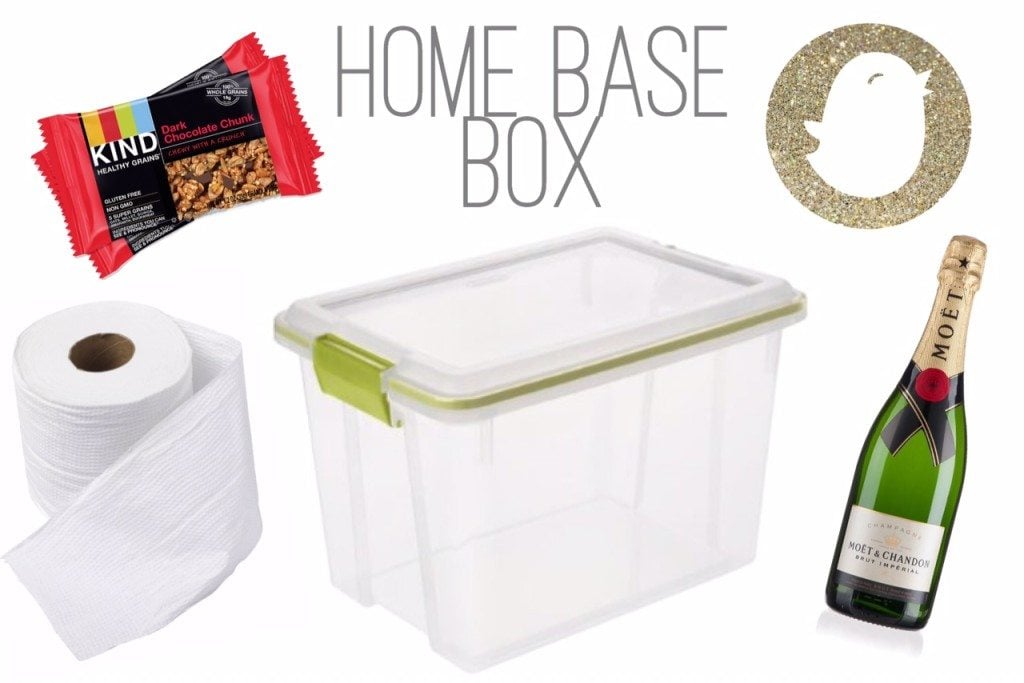
On Moving Day
Unless you are okay with moving day taking twice as long and being twice as stressful, I highly recommend hiring child care or having a family member help. We planned to have our favorite “extra set of hands” spend the day with our kiddos at our beloved neighborhood spots one last time: the park, our favorite pizza place, and maybe even the splash pad. It’s an excellent way for the littles to say a final goodbye to their neighborhood and to keep them out of the house for a few hours. I was very concerned that with people coming in and out of our home, one of our quick toddlers might slip out through an open door with no one noticing. Having an extra set of hands comforted me and allowed me to shift focus onto coordinating the move.
Ensure all your utilities are up and running for moving day. This is a given, but a little reminder doesn’t hurt! Be sure to keep all of your new account paperwork in your “Home Base Box” so that it’s easily accessible.
After the truck is loaded and the movers are done doing their thing, take some time to say goodbye to your old house. Thank the house for all the good times and great memories. Take some pictures of your wee ones in the empty house and the front yard and blow a kiss goodbye. Then, on to the next adventure!


















